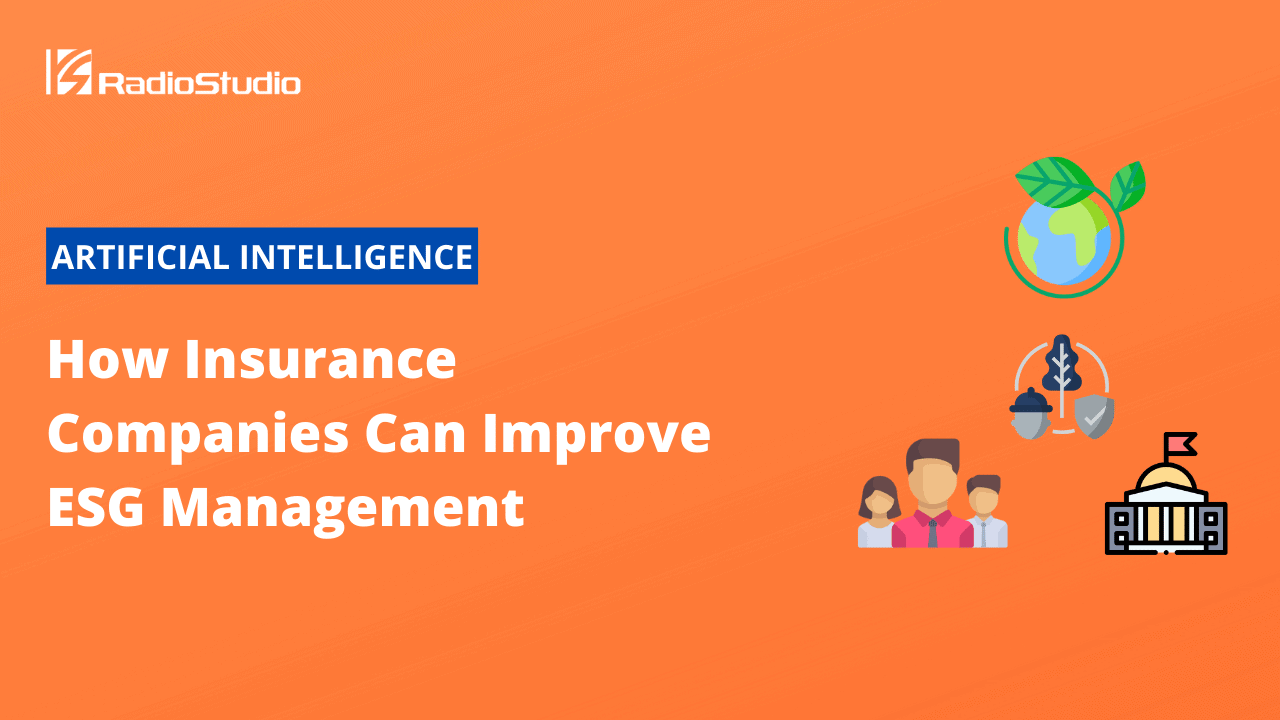Environmental, social, and governance (ESG) criteria are a set of standards for a company’s operations that socially conscious investors use to screen potential investments. Environmental criteria consider how a company performs as a steward of nature. Social criteria examine how it manages relationships with employees, suppliers, customers, and the communities where it operates. Governance deals with a company’s leadership, executive pay, audits, internal controls, and shareholder rights. Insurance companies—like companies in many other industries—are under increasing pressure to adopt ESG-friendly practices. This article discusses how insurance companies can improve their ESG management.
This article was originally published by Appian.
What are ESG Principles?
Each of the three components of ESG addresses a different angle from which to prioritize socially conscious practices: environmental, social, and governance.
Environmental considerations focus on the impact the organization and its investments have on the environment, including but not limited to energy usage, waste, pollution, resource conservation, and more. Social considerations focus on the enterprise’s impact on internal and external stakeholders, including staff, suppliers, customers, and communities. These encompass inclusivity, equity in hiring and paying staff, working conditions, and more. Governance considerations include anti-corruption, anti-bribery, anti-money laundering, risk management, and ethical business practices.
Each category of ESG encourages businesses to look beyond their bottom line and consider their impact on the planet, their stakeholders, and communities.
ESG Challenges for the Insurance Industry
As insurers learn to navigate ESG-conscious efforts, two key struggles of ESG management have come to the forefront:
- There is an emerging direction from regulatory agencies and regional governing bodies to move toward ESG practices. However, there are no clear and universal ESG standards yet, and insurers from Switzerland to Sydney to San Francisco follow different ESG-related requirements and expectations. The European Union is leading the way with ESG taxonomy, but North America and Asia-Pacific countries are yet to require similar standards. Around 60% of the US insurance industry is looking for greater clarity from regulators, particularly with respect to identifying, measuring, and reporting on ESG factors.
- Managing ESG data and reporting it to stakeholders is difficult and disorganized. Siloed systems, changing requirements, and minimal visibility into ESG efforts make it hard to keep stakeholders informed.
Despite the challenges ESG brings to insurance companies, it’s a priority for consumers. So how can insurers manage their ESG efforts more effectively?
How Insurers Can Manage ESG Initiatives Easily
Insurers—particularly those who have been in business for many years—often rely on 10, 20, or even more than 30 systems that house ESG-related data. A key challenge the insurance industry faces is quickly adapting to changing ESG requirements, which requires gaining visibility into all ESG data elements across the enterprise and validating them against a list of evolving ESG criteria and attributes.
With outdated, siloed systems, insurers are not set up to successfully track and report on ESG compliance. Rather than retire older solutions that the enterprise has been reliant on, insurers can reap benefits by using a low-code platform to unify and extend existing technologies.
What is Low-Code and How Does it Help Insurers Manage ESG?
Built with open integrations and APIs, a low-code platform connects insurers’ solutions to bring data into a single source of truth and house mission-critical data in a digestible, unified view. With low-code, insurers can dramatically streamline ESG management with these benefits:
- Flexibility and speed. Quickly address changes to taxonomy content, questions, or industry designations.
- Accessible information. Easily manage internal and external ESG-related data by connecting legacy core systems and providing a single, 360-degree view to determine ESG conformity of products, services, and business relationships.
- Intelligent automation. Process a large volume of ESG-related documents quickly with intelligent document processing, powered by AI.
- Visual process flows. Enable a comprehensive view of all ESG-related processes and their dependencies across the entire organization.
- Fast integrations. Share data with external information providers and regulatory or governmental agencies to manage updates, ratings, and certifications while maintaining the highest level of data security.
- Scalability. Orchestrate bots with people, systems, and data in a single workflow.
With a low-code platform, insurers increase efficiency in ESG efforts across the organization, including these critical functions:
- Customer/cedent onboarding.
- Complex quote and bind processing.
- Complex underwriting.
- Agent and broker onboarding.
- Customer complaint management.
- Adjuster assignment/vendor management.
- Product review/life cycle management.
Unifying data and streamlining processes across these departments and teams will improve ESG management for insurers and ease the workload on internal stakeholders responsible for ESG reporting.
What to Look for in a Low-Code Platform
A robust low-code platform helps insurers rapidly build and automate workflows by combining people, technology, and data in one place. To realize the full power of low-code, the platform needs to unite and augment workers and resources and include these features:
- Robotic process automation (RPA): Bots perform repeatable, routine tasks, freeing employees to focus on higher level work. RPA can also help connect older systems that don’t have APIs.
- Artificial intelligence (AI): AI can make simple cognitive decisions, suggest next steps, and ensure that business rules and logic are followed.
- Business process management/workflow: The backbone of automation, workflow orchestrates RPA, AI, systems, and people in a cohesive process, ensuring it seamlessly progresses from start to finish.
- Decision rules: Simple interfaces enable developers to add complex business rules to any workflow without coding.
- Case management: Manage exceptions and ad hoc workflows in a single location for better visibility and improved collaboration.
ESG efforts will continue to increase in urgency for organizations around the world. With low-code, insurers have a foundation for easy management and reporting on their efforts as expectations and guidelines change, helping them remain agile. Insurers looking to better manage ESG data will see vast improvements with a low-code platform—and ESG efforts are just one of many ways to use the solution in the insurance industry.


